Recessed lighting trim
(3852 products available)






Hot Sale Led Downlight Dia 82mm Deep Recessed Anti Glare IP54 Fitting 10W Led Cob Downlight






18107 LED Skirting Aluminum Profile Embedded Recessed Installation Assembled With LED Strip For Indoor Decoration Light







High Quality Spot Down Light Die Casting Aluminum Recessed Anti Glare COB LED Downlights Round Square Downlight SMD2835







16x12mm Led Aluminum Profile Recessed In Wall Cabinet And Ceiling Board







New Arrival Modern Design COB LED Glass Down Light Single Two Colors Optional Recessed Mounted 5W 7W 10W 15W 24W Downlight







10W IP54 Outdoor and Indoor Lighting Small Trim or Trimless Optional Recessed Cob Led Downlight






5CCT 9w 4inch Recessed Round ultra Slim Led Panel Lights Ceiling Round White Trim Adjustable Panel Pot Light
Popular in your industry






Ultra Compact Design 10W Multi Downlight Small Trim Deep Recessed Led Light Downlight Anti-glare Mini Led Downlight

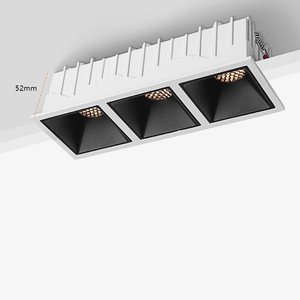
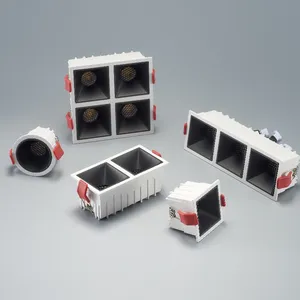

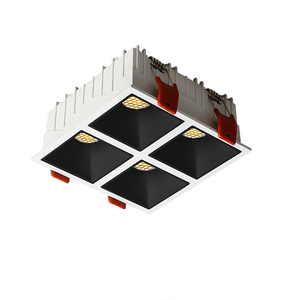

7*2w Recessed Downlight Cob Square Ceiling Light Spot Light Trim Trimless Cob Lamp Model Downlight 7w Led Grille Light
Related Searches:






Rotation Recessed Ceiling Lights Retractable Eyeball Spotlights Retrofit Downlight Anti-Glare Trim,CRI >97, Gimbal Can Lights







Black White Trim Smd 12w Led Round square Ceiling Recessed Lighting 110v Dimmable Downlight 3 Colors






China Round Recessed Light White Adjustable Fitting Trims LED Downlight Holder Housing






Wet Rated Led Recessed Ceiling Pot Light ETL Retrofit Downlight with Replaceable Trim






4/6 Inch 5CCT LED Recessed Lighting 12 Pack, Dimmable IC Damp Rated 950LM Canless Integrated LED Downlights with Baffle Trim






Multiple Commercial Trimmed Trim or Plaster in Led Ceiling Trimless Anti-glare Recessed Downlight






2 Inch 8W LED Recessed Lighting with Driver Box, Dimmable Baffle Trim Canless Downlight, Anti-Glare, 3CCT,,ETL for Apartment






Ephan 6 Inch 15W Led Light Bulb Lights Baffle Trim CRI90 1250lm Dimmable Recessed Lighting Damp Rated LED Recessed Dow






Dali Dimming Mini 10W Warm White Aluminum Alloy Round Anti-Glare Small Trim Dimmable Lamp Led Cob Spot Recessed Down Light






MR16 GU10 Bulb Recessed Light Fixture Trim Rings White Square Downlight Frame



4 Inch White Canless Recessed Round Disk Light Length Integrated LED Trim Kit Fixture Warm






Rectangular White Recessed Trim Mounted LED Single Double Triple Heads COB Square Ceiling Light Downlight Gimbal Spot Light
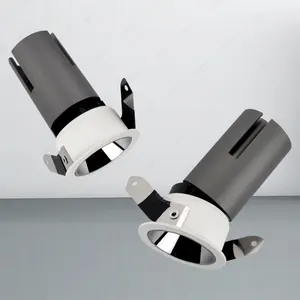





3w 5w 7w Small Design Modern Multi Downlight Small Trim Deep Recessed Led Light Downlight Anti-Glare Mini Led Downlight






China Square Recessed Light White Adjustable Plastic Fitting Trims LED Downlight Holder Housing






Downlight Spot Lights Led Adjustable Downlight Adjustable CCT Dimmable Integrated LED Recessed Downlight With Baffle Trim





ETL 4 Inch Gold LED Can Lights Retrofit Light 5CCT Selectable 100-130V Triac Dimmable 9W 800LM Recessed Lights with Baffle Trim






5in 6in Integrated LED White New Construction Remodel Recessed Light Trim With Adjustable Color Temperature Retrofit Light






4 Inch 11W ETL Gimbal LED Downlight 1000 Lumens Dimmable 120V Recessed Ceiling Round White Trim Adjustable Panel Pot Light






RoHS 3000K 630lm Dimmable LED Gimbal Downlight 3.5 Inch 12W Adjustable Recessed Ceiling Trim Modern Indoor Lighting






Arcllux X Series Modern Indoor LED Recessed Light Round Trim and Trimless Adjustable Aluminium IP44 Rating






CE RoHS Aluminum Heat Sink Dimming Adjustable Frameless Trimless Recessed Spotlight Housing Borderless Downlight Black Trim






High Quality 4 Inch Modern Led Downlight Gimbal Trim for Recessed Pot Light






Hot-sale Anti-glare Downlight Round Square Trim and Trimless Recessed Light Led Cob Adjustable Down Light






ETL Listed Energy Star Certified 12W Dimmable Ceiling Light LED Baffle Trim Retrofit Can Recessed Downlights"






5/6 Inch 3CCT LED Recessed Lighting 12 Pack, Dimmable IC Damp Rated 950LM Can Lights with Baffle Trim






4 Inch 11W ETL Gimbal LED Downlight CCT Adjustable 120V Recessed Ceiling Round White Trim Adjustable Panel Pot Light






Waterproof Recessed COB LED Downlights Baffle Trim 7W/12W/15W/18W/24W/36W Ceiling Indoor Outdoor Lighting
Top categories
About recessed lighting trim
Types of Recessed Lighting Trim
Recessed lighting trim is the finishing ring that surrounds a recessed light bulb. The trim serves both functional and aesthetic purposes. It offers different light distributions, such as focused beams for task lighting or wider spreads for ambient illumination. Trim types also provide distinct appearances, from sleek minimalism to decorative accents, catering to varied ceiling designs and personal preferences.
Here are the different types of recessed lighting trim:
-
Reflector Trim
A reflector trim is a type of recessed lighting trim that utilizes a reflective interior surface, usually made of polished aluminum or chrome, to direct light output. This trim is designed to enhance the efficiency and brightness of recessed lighting fixtures. The reflector trim focuses and amplifies the light beam from the bulb, making it ideal for areas where increased illumination is needed. These areas can be task workspaces, kitchens, or commercial settings. Moreover, the shiny finish offers a clean, contemporary appearance, making it a popular choice in modern interiors.
-
White Trim
A white trim for recessed lighting is a simple and versatile trim option. This trim features a white-painted or powder-coated finish on the trim ring and a baffle or louver insert. The white finish blends seamlessly into the ceiling, minimizing visual distractions and providing a clean, unobtrusive look. This makes the white trim suitable for residential spaces like living rooms, bedrooms, and home offices. Additionally, it is often used in commercial settings where a professional, polished appearance is desired.
-
Eyeball Trim
Eyeball trim is an adjustable type of recessed lighting trim that allows for the direction of light. It features a circular housing with a moving, ball-and-socket mechanism that enables the user to tilt and swivel the trim. This adjustment provides focused illumination on specific areas or objects. This is beneficial for highlighting artwork, architectural features, or areas of interest. Moreover, this trim is aesthetically flexible, coming in various finishes such as brushed nickel, oil-rubbed bronze, and white to match different interior designs.
-
Sloped Ceiling Trim
This type of trim is specifically designed for recessed lighting fixtures installed on sloped or vaulted ceilings. The sloped ceiling trim includes a unique housing and lens configuration that accommodates the angle of the ceiling. It also ensures optimal light distribution and fixture performance. Moreover, the design of the trim minimizes glare. It provides a smooth, diffused light output, making it a practical solution for illuminating spaces with architectural features such as sloped ceilings.
-
Decorative Trim
Decorative trim for recessed lighting is a visually appealing and ornate option that enhances the aesthetics of a space. It comes with intricate designs, patterns, or embellishments. This can include floral motifs, geometric shapes, or sculptural elements. Decorative trim adds a touch of elegance and personality to the lighting fixture. It transforms recessed lighting into a statement piece contributing to the room's overall design. Typically found in luxury or custom-designed interiors, decorative trim caters to those seeking unique and high-end finishing touches.
-
Metal Baffle Trim
Metal baffle trim is a type of recessed lighting trim characterized by its metal construction and internal baffle design. The baffle consists of ridges or fins that reduce glare and control light spill. This makes the baffle trim a good choice for task lighting areas such as kitchens or offices. It also provides focused illumination. The metal finish offers a touch of sophistication and elegance. This makes it suitable for both contemporary and industrial-style interiors.
Function and feature of recessed lighting trim
Recessed lighting trim refers to the decorative ring or border that finishes the edge of recessed light fixtures in ceilings. This trim serves both functional and aesthetic purposes. Here are some common functions along with features of recessed lighting trim:
-
Housing
The recessed lighting trims house the bulb providing a safe place for it to sit. It also holds the wiring allowing for connection to be made safely. Without trim, the recessed light would not be functional.
-
Diffusion of Light
Some trims have special features to diffuse light more evenly. This reduces harsh shadows and creates a smooth, ambient glow. Diffused trims are useful when softer illumination is desired for rooms like living spaces or bedrooms.
-
Adjustability
There are adjustable trims that allow the direction of light to be changed. This is useful for recessed lights that need to shine on different areas over time. For example, adjustable trims can spotlight artwork or illuminate various room parts as needed.
-
Trim Styles
They come in different styles to match the decor of your home. For example, slim trims have a modern look, while decorative trims add a vintage touch. Choosing a trim style allows the recessed lighting to blend seamlessly into the interior design.
-
LED compatibility
Many trims are specifically designed to work optimally with LED bulbs. This ensures that the energy efficiency and long lifespan of LEDs are maximized. LED compatible trims help homeowners take advantage of the benefits of using LED lighting.
-
Glare Control
Some specialized trims have features that reduce glare from the recessed lights. This makes the lighting more comfortable for looking at. Glare control trims are useful for areas like offices or conference rooms where bright light may cause discomfort.
-
Color Temperature Control
There are trims available that allow the color temperature of the recessed lights to be changed. This provides the flexibility to set different moods for the lighting. For example, warm tones are used for relaxing, while cool tones are used for energizing.
Scenarios of recessed lighting trim
Recessed lighting trims have several applications across different industries and sectors. Here are some common use case scenarios:
-
Residential Lighting
Recessed lighting trims are extensively used in home lighting. Homeowners install them in living rooms, kitchens, bedrooms, bathrooms, and hallways. They offer a clean and streamlined look, minimizing visual clutter and providing ambient, task, or accent lighting.
-
Commercial Spaces
Commercial spaces like offices, retail stores, restaurants, and hotels use recessed lighting trims for lighting. In office spaces, recessed lighting provides uniform illumination without glare. In retail stores, it highlights merchandise, while in restaurants and hotels, it creates a warm and inviting atmosphere.
-
Hospitality Industry
Recessed lighting trims are commonly found in hotels, resorts, and restaurants. They provide ambient lighting in guest rooms, lobbies, dining areas, and conference rooms. The trims offer a sophisticated and well-designed lighting solution that enhances the overall ambiance and guests' experience.
-
Healthcare Facilities
Healthcare facilities like hospitals, clinics, and medical centers require proper lighting. Recessed lighting trims are installed in examination rooms, hallways, waiting areas, and surgical suites. They provide adequate illumination for medical procedures and create a calming environment for patients and visitors.
-
Educational Institutions
Schools, colleges, and universities use recessed lighting trims in classrooms, lecture halls, libraries, and administrative areas. The trims offer uniform lighting that promotes concentration and reduces eye strain in educational settings.
-
Industrial and Manufacturing Facilities
Recessed lighting trims are used in industrial settings, such as manufacturing plants, warehouses, and logistics centers. They provide illumination in production areas, storage spaces, and assembly lines. The trims are durable and high-powered, ensuring safety and operational efficiency.
-
Entertainment Venues
Theatres, auditoriums, concert halls, and sports arenas use recessed lighting trims for lighting. They create ambient lighting, highlight performance areas, and offer task lighting for staff and performers. The trims contribute to the overall atmosphere and visual impact of events.
-
Art Galleries and Museums
Recessed lighting trims are used in art galleries, museums, and exhibition spaces to illuminate and preserve artwork. Adjustable trims allow precise aiming and dimming capabilities to highlight artifacts and paintings without causing damage.
-
Outdoor and Landscape Lighting
Some recessed lighting trims are designed for outdoor use. They provide illumination for driveways, pathways, decks, and landscaped areas. Outdoor recessed lights enhance safety, security, and the visual appeal of outdoor spaces.
How to choose recessed lighting trim
When choosing the right recessed lighting trim, there are several factors to consider, such as:
-
Determine The Style And Finish
Decor retailers should consider buying recessed lighting trims in various finishes and styles to ensure their clients have options to choose from that will complement the decor of their space. Recessed lighting trims come in different styles, such as baffle trims, eyeball trims, and decorative trims. They also come in different finishes, like black, white, and bronze.
-
Look at The Beam Angle
Homebuyers should look for recessed lighting trims that have a variety of beam angles to get suitable lighting for different spaces in their homes. The beam angle is the spread of light from the fixture. A narrow beam is ideal for highlighting specific areas, while a wide beam is suitable for general illumination.
-
Compatibility With Light Sources
Home and business owners should get recessed lighting trims that are compatible with their preferred light sources. Recessed lighting trims can be compatible with LED, halogen and incandescent lights. Usually, LED lights are popular due to their energy efficiency.
-
Easy Installation
Homeowners should get recessed lighting trims that are easy to install and compatible with their existing setup. They should also consider getting trims that are easy to maintain.
-
Adjustability
To get the most out of their recessed lighting, homeowners should get trims that have adjustable features. Recessed lighting trims with adjustable features allow users to direct light where it is needed. This is especially useful in areas where the decor changes frequently.
-
Quality
Home and business owners should invest in quality recessed lighting trims to get durable products that perform well. They can determine the quality by looking at the materials used in manufacturing the trims.
Recessed lighting trim Q&A
Q: What is the purpose of recessed lighting?
A: Recessed lighting is also known as can lighting or pot lighting. It is used to illuminate the ceiling. This lighting is used for indoor and outdoor spaces to offer a seamless look.
Q: What is a trim in recessed lighting?
A: A trim is an important part of recessed lighting. It is the visible portion that finishes the fixture. The trim comes in different sizes, shapes, and colors to match the ceiling space.
Q: What are the types of recessed lighting trims?
A: There are several types of recessed lighting trims, including:
Standard trim - This is the basic and most commonly used recessed lighting trim. It is suitable for various applications.
Decorative trim - This trim features unique and ornate designs for a more visually appealing look.
Adjustable trim - This recessed lighting trim can be adjusted to direct light where needed.
Solar tube trim - This trim is used with solar tube lighting to bring natural light into a space.
LED trim - This trim is designed specifically for LED recessed lighting fixtures. It usually has a smaller aperture and is more energy-efficient than traditional trims.
Q: Are recessed lights LED?
A: Recessed lighting can be either LED or non-LED. Non-LED recessed lighting uses incandescent or halogen bulbs. But LED lighting is more popular due to its energy efficiency and long lifespan. LED lighting is also versatile and offers various color temperatures.
























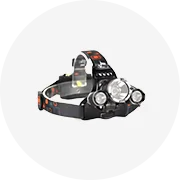


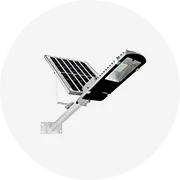






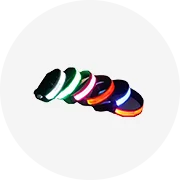








 浙公网安备 33010002000092号
浙公网安备 33010002000092号 浙B2-20120091-4
浙B2-20120091-4